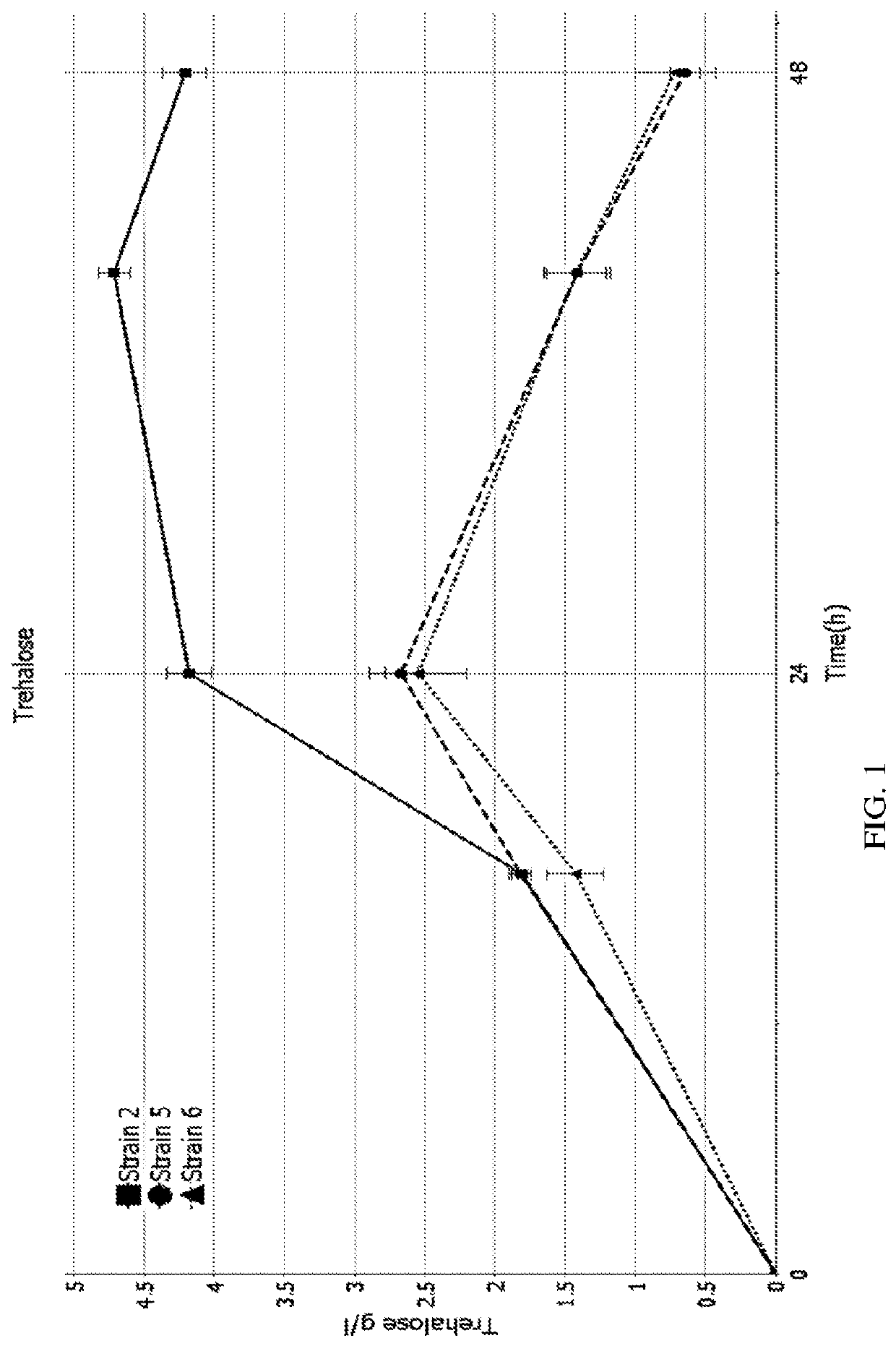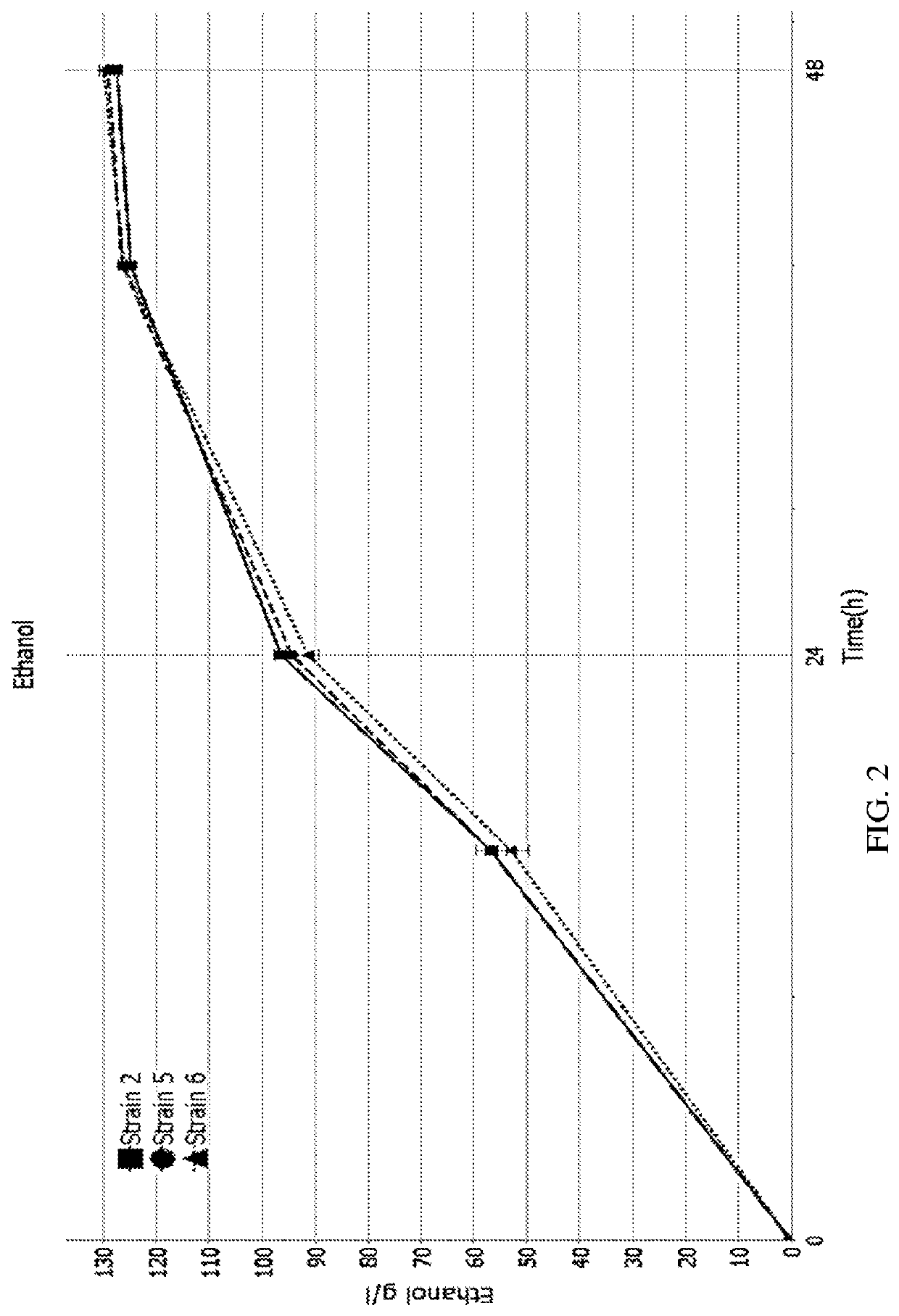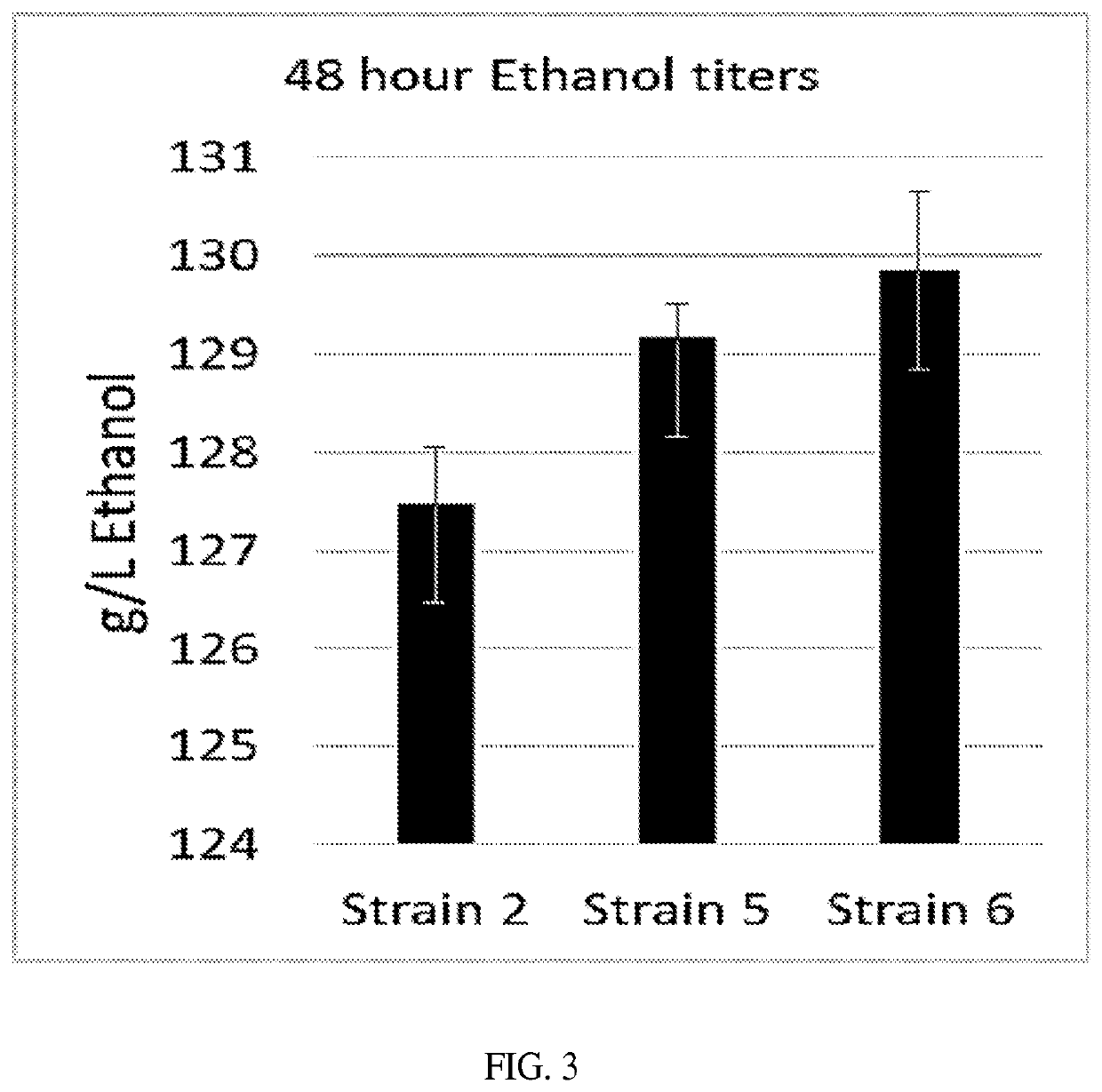Genetically modified trehalase-expressing yeasts and fermentation processes using such genetically modified yeasts
a technology of genetically modified trehalase and yeast, which is applied in the field of genetically engineered yeast, can solve the problems that wild type yeasts do not produce significant quantities of trehalase, and achieve the effect of increasing the ethanol output of fermentation
- Summary
- Abstract
- Description
- Claims
- Application Information
AI Technical Summary
Benefits of technology
Problems solved by technology
Method used
Image
Examples
experimental examples
[0124]The invention is further described in detail by reference to the following experimental examples. These examples are provided for purposes of illustration only, and are not intended to be limiting unless otherwise specified. Thus, the invention should in no way be construed as being limited to the following examples, but rather should be construed to encompass any and all variations which become evident as a result of the teaching provided herein. This disclosure is generally directed to embodiments of S. cerevisiae yeasts producing ethanol. However, the disclosure is not limited to such yeasts and fermentation products. Embodiments directed to other yeast species and / or bioproducts are intended to be included within the teachings and inventions of this disclosure.
example 1
ly Modified Yeast Strains Expressing Trehalases
[0125]In this example, Saccharomyces cerevisiae strains are transformed to express acid trehalases from Kluyveromyces lactis, Candida parapsilosis, and Candida glabrata. The acid trehalases are expressed using the TDH3 promoter. A version of each trehalase is synthesized with that gene's native signal peptide, and a second version of each is synthesized with the MFα2 signal peptide from S. cerevisiase. Saccharomyces cerevisiae strains are also transformed to express a trehalase from Magnaporthe grisea expressed using the SAM2 promoter. Selected strains are also transformed to include glucoamylase expression and / or genes associated with glycerol reduction. The transformed strains are used in ethanol-producing fermentations. The transformed strains consume trehalose formed during fermentation, and transformed strains are shown to produce higher quantities of ethanol compared to a strain that does not express a heterologous trehalase.
Strai...
example 2
ization of Strains in Shake Flask Assay
Shake Flask Method
[0150]Strains 2 thru 8 are struck to a ScD-Ura plate and incubated at 30° C. until single colonies are visible (1-2 days). Cells from the ScD-Ura plate are scraped into sterile shake flask medium and the optical density (OD600) is measured. Optical density is measured at wavelength of 600 nm with a 1 cm path length using a model Genesys20 spectrophotometer (Thermo Scientific). A shake flask is inoculated with the cell slurry to reach an initial OD600 of 0.1-0.3 Immediately prior to inoculating, 50 mL of shake flask medium is added to a 250 mL non-baffled shake flask (Corning 4995-250) fitted with a screw cap containing a gas-permeable seal (corning 1395-45LTMC). The shake flask medium consists of 725 g partially hydrolyzed corn starch, 150 g filtered light steep water, 50 g water, 25 g glucose, and 1 g urea. Duplicate flasks for each strain are incubated at 30° C. and 80% humidity with shaking in an orbital shaker at 100 rpm f...
PUM
| Property | Measurement | Unit |
|---|---|---|
| temperature | aaaaa | aaaaa |
| temperature | aaaaa | aaaaa |
| temperature | aaaaa | aaaaa |
Abstract
Description
Claims
Application Information
 Login to View More
Login to View More - R&D
- Intellectual Property
- Life Sciences
- Materials
- Tech Scout
- Unparalleled Data Quality
- Higher Quality Content
- 60% Fewer Hallucinations
Browse by: Latest US Patents, China's latest patents, Technical Efficacy Thesaurus, Application Domain, Technology Topic, Popular Technical Reports.
© 2025 PatSnap. All rights reserved.Legal|Privacy policy|Modern Slavery Act Transparency Statement|Sitemap|About US| Contact US: help@patsnap.com



